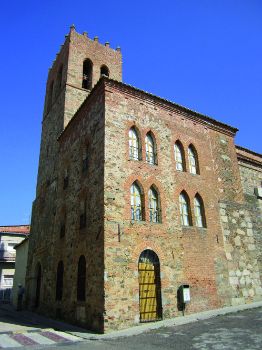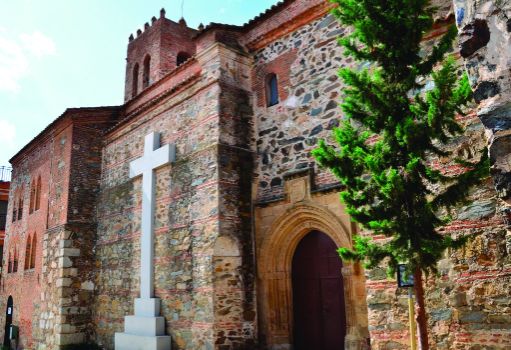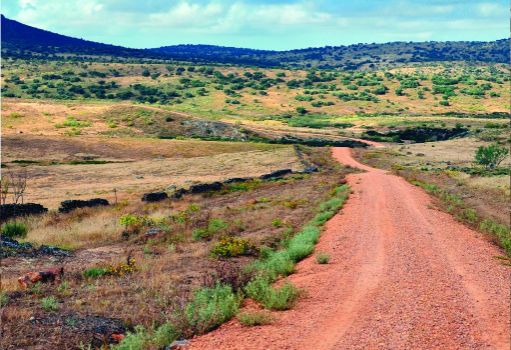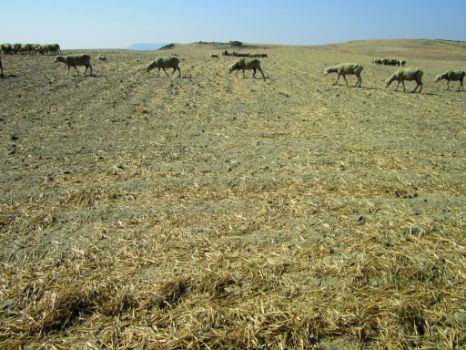Net of Natural
Trails

Stage 23: Casas de Don Pedro a Puebla de Alcocer
Description
A long walk through the Extremaduran dehesa
This Stage links the Extremaduran towns of Casas de Don Pedro and Puebla de Alcocer. The route first runs along the BA-137 that leads to Orellana Reservoir, and then crosses the vast pasturelands on its south shore. The second part of the Stage ventures along Cordel de las Merinas, a marked livestock track that crosses through sheep farms.

The Stage begins near the parish church of San Pedro Apóstol at Casas de Don Pedro. The route heads towards Orellana Reservoir, crosses through the town, and passes next to the shrine of Virgen de los Remedios, a 16th-century Mudejar building.
From the edge of the town, the route continues along the old, paved road to Puebla de Alcocer, thus avoiding having to use the BA-137 for a while. At the intersection of these two roads, the route first crosses the Dehesas Canal (refer to Stage 22), and then the Colada de las Eras, a trail where the predominance of livestock farming in the area is evidenced.
The Trail is interrupted just before the bridge on the Orellana Reservoir, due to the BA-137. On the west bank, right at the end of the bridge, is a rest area with comprehensive public and recreational infrastructure, including a platform leading to the reservoir that can be used as a beach or a pier. Angling is common in this area. Next to the beginning of the bridge is the Shrine of San Cristóbal, which can be accessed from the rest area.

The two best, iconic images of this Stage are the views of the water from the centre of the bridge, and of the bridge from the recreational area. After crossing the reservoir, the Trail can continue along two different routes: one along the BA-137, and the other along the reservoir's old service road, used only by anglers to access certain sites along the River Guadiana, and which ends at Km 425 of the BA-137.
Back on the BA-137, should you decide to take this route, the Trail heads towards Puebla de Alcocer, traversing through meadows where sheep graze, and an occasional cattle or stud farm is seen. However, before reaching this town, the Trail drifts away towards Cordel de las Merinas, a marked livestock trail along which it continues until the endpoint. The only change to the landscape is the dirt track along which the route now advances.

As the Trail heads south, closer to Grande Creek, a stream along the bottom of a steep valley, the terrain turns more rugged, with outcrops of bedrock. The area to the left has experienced extensive reforestation with scrub oaks, which gradually dominate the landscape.
The Trail crosses two sizable waterways as it heads along the narrow mountain pass. The first is Casas Creek, which it crosses via a transversal drainage work. The other is the aforementioned Grande Creek, which is actually a seasonal stream with a rocky bed. The other waterways are nameless run-off streams that the Trail fords.
Past the Grande Creek, the route turns 90°, heading directly towards Puebla de Alcocer. There are several crossroads along the way, and the landscape gradually changes from livestock to forest, with patches of scrubland.
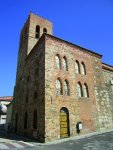
Shortly before reaching the stretch shared with Stage 24, to the right of the road to and from Puebla de Alcocer, at El Guijo, is a hill covered with evergreen scrub that inevitably attracts the attention of passers-by. Past the junction with the next Stage, the path runs almost straight ahead through rolling hills towards Puebla de Alcocer, the visual reference in the final kilometres. The Stage ends at the outskirts of the town, next to a side wall of a hotel near the road leading back to Casas de Don Pedro.
Sites of interest
Profile
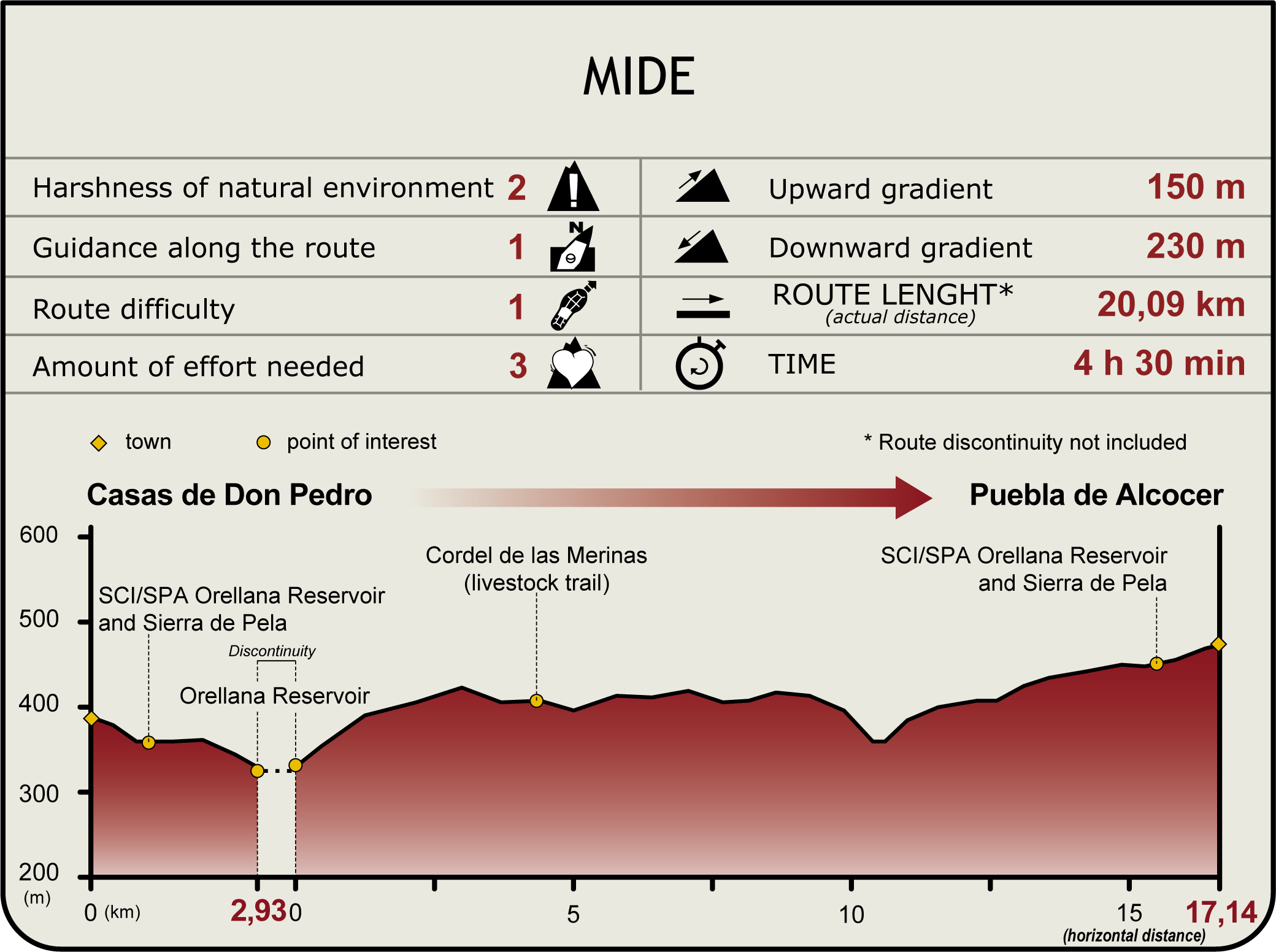
Highlights
Further information
Parish Church of San Pedro Apóstol
The temple was built starting in the late fourteenth century in civil Gothic style, although the façade is from the late Gothic period (c. 1499). The walls are made of slate masonry, and the door, windows and mullion are brick.
The building has a single nave with five arches topped with a very large, closed dome. This dome was possibly built when the wonderful altarpiece (153 m2) was placed in the headwall in the sixteenth century.
The door in the south wall has pointed stone archivolts decorated with leaf festoons, stylised floral motifs, rosettes, cupids and small animals typical of the late Gothic style.
A masonry Mudejar tower rises at the foot of the church. It is in the tower-façade style, which is very common in the Lower Extremadura. The entrance is a brick door with a semi-circular arch. Above the door is a trilobed window with pointed arches. The building is capped with a belfry with a protruding mould that has two pointed windows on each side.



